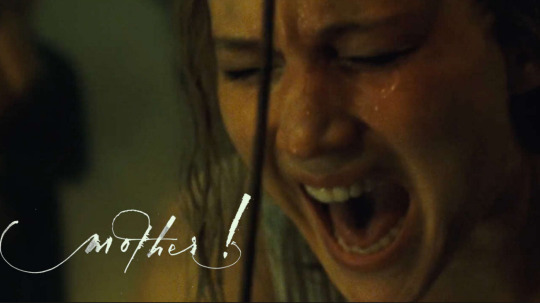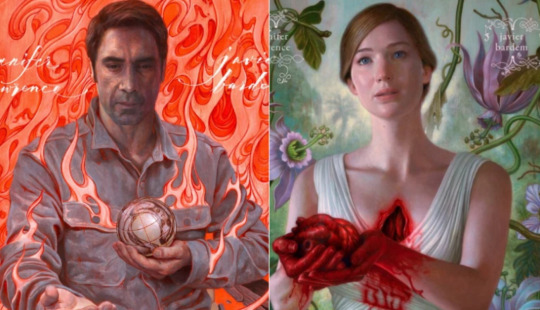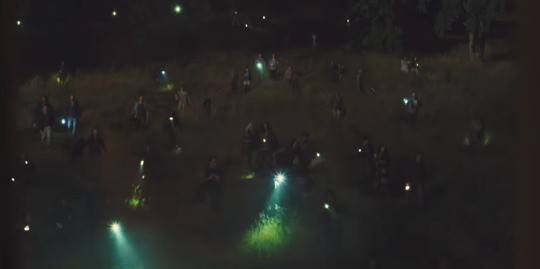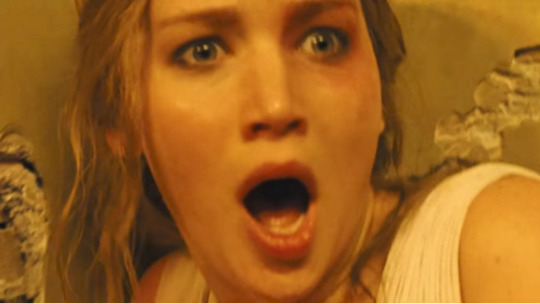#seriously what primordial force did I piss off?
Text
Crossover Idea #3 - Undertale/Bendy and the Ink Machine
The Ink Machine Falls into the Dump in the Underground
This idea is exactly what it sounds like. After escaping the studio and disassembling the Ink Machine so that nobody else will ever activate it again, Henry dumps all the pieces of it and the blueprints used to make it in a hole in the side of a mountain near his home, in the hopes that no one would ever find it again. What he didn’t realize is that the mountain in question is Mount Ebott, and the sealed box with all that dangerous stuff inside has fallen into the dump in Waterfall. Sometime later, while searching for new anime with Undyne, Alphys finds the box, opens it, and is immediately enthralled by the machine (in the less magical sense of the word, not the “it’s magically controlling me” sense of the word.) She brings it back to the True Lab and starts reassembling it in her free time, focusing on it especially after the Amalgamates are created to distract herself from her mistakes. When she finally finishes it and then turns it on, she, very predictably, ends up bringing Bendy and eventually Alice Angel and Boris back into the world, right there in the True Lab. At first she’s absolutely terrified of the ink creatures (and for good reason – Bendy’s first reaction to being alive again was screeching and lunging blindly at her in a fit of rage), but she quickly becomes intrigued and, with help from Sans (the only other person who knows what’s been going on down in the True Lab for a while now), she soon discovers something both incredible and horrifying – that the ink creatures, all of them, are technically artificial monsters, created using the remains of human souls.
That’s the basic idea of the crossover, and here’s a few details I’ve worked out as well:
Whatever ritual Joey Drew used to create the ink creatures in this crossover needed human sacrifices, and when he sacrificed some of his employees during said rituals, their souls sort of started to bleed together – in some ways, much like the Amalgamates did. The souls basically melted into the ink in the studio, barely able to keep any kind of individuality to them at all, and turned into a spiritual, primordial soup, which new souls eventually began to form out of.
The remains of the souls are extremely pissed off (and rightly so, I must say), mostly at Joey but also at anyone who “abandoned” them to their unhappy fates. This negative emotion heavily influences the newborn souls of the ink creatures, forcing them into enraged states whenever someone to aim their anger at turns up (thus the hostility of most of the ink creatures in the studio towards Henry.) This has a side effect of making the ink creatures emotionally unstable at the best of times, the most common problem for them being anger management issues and disproportionate reactions when angry (like, “hey you made my food wrong so now you have to die” disproportionate.)
The reason for many of the ink creatures’ off-model appearances is the anger of the soup-o-souls they're made out of – the anger directly affected their appearance, making them more twisted and monstrous (the bad sort of monstrous). However, whenever the soup-souls are calmer, the ink creatures/toons can become a little closer to on-model – Bendy, for instance, will shrink and become considerably less lopsided than he is in-game, though he will always have his eyes covered and tends to leave dripping trails of ink behind him when he walks.
Despite initially attacking Alphys (and Sans, when she asks for his help), once Bendy and his soup-souls realize she’s not one of the “Creators” they stop being hostile towards her, at first simply following her at a distance (ie. stalking her creepily from a distance) when she’s in the Lab, and eventually getting curious enough to start getting closer and closer and eventually start asking her questions about her, her work, monsters, and other general stuff. (And still being creepy, because let’s face it, look at Chapter 3. Bendy is supremely unsettling even when he hasn’t seen you there. Pulsing ink, creepy music…)
Bendy is both blind and mute, because of alterations to his body caused by the soul-soup he formed form – instead of using his voice and eyes, he instead uses that pulsing ink that appears in the area around him in Chapter 3 of the game to “feel” his way around, as well as form words and symbols on the wall to communicate. This means that wherever there’s ink, he can literally “see” everything there.
Once he’s calmed down enough, Bendy LOVES Sans’s stupid puns and even tries to make ones of his own sometimes.
Once Alphys and Sans figure out about the whole “human souls were sacrificed to make these artificial souls” thing, they are understandably pissed at Joey Drew, because HELLO you don’t do that to people. Also, the ink creatures are technically monster children at this point, and Joey dissected at least one of them. You don’t do that to your kids, Joey.
Eventually, other monsters find out about the ink creatures thanks to a couple of the friendlier ones following Alphys or Sans out of the Lab, and those ink creatures sort of getting adopted into monster society despite their personality issues. Seriously, EVERY monster in the Underground does their damnedest to take care of the ink creatures, and are righteously furious at humans in general for doing this to their own people. (Some ink creatures even end up in the Ruins, though how is anybody’s guess – Toriel ends up mothering most of those ones, and sometimes they’ll bring her pie to other ink creatures to try.)
Bendy stays in the True Lab during this whole thing right up until Frisk falls into the Underground – he prefers being on his own.
During the one and only Genocide run that occurs, Bendy finds out about what’s going on because Alphys has been hiding at least some of the fleeing monsters in the True Lab, and gets pissed, mostly because his privacy is being invaded by these scared monsters, and he immediately leaves the True Lab to hunt Frisk down. He catches up to them in the MTT Resort, where Frisk ends up trapped and extremely, incredibly traumatized because Bendy is terrifying when he’s pissed, even to a kid who can Reset when they die. (And you can’t run away from Bendy when the doors have been blocked with ink... how do you fight something like that?)
*Looks at the wall of text above.* Oops. Word vomit. Sorry? Heheheh *sweatdrops*
#crossover ideas#fanfic ideas#bendy and the ink machine#undertale#the ink machine falls into the dump in the underground#and alphys finds it and reassembles it#bendy#sans#alphys#ink creatures are artificial monsters created using human souls that were sacrificed by joey drew#monsterkind adopts the ink creatures
21 notes
·
View notes
Text
mother! — What the “Baby Moment” Signifies
Plumbing the Third Act

For weeks I’ve been haunted by the dark, dark, dark third act of Darren Aronofsky’s latest film. I remember feeling this way for weeks after Black Swan, too. It’s an emotion that stretches like vines, like fingers, pulsing and slithering its way about without letting go easily. Aronofsky, of course, has always had a gifted predilection for exploring darkness, but in mother! he really amps up the insanity, delivers a mind-blowing climax, and goes places I wasn’t entirely expecting, nor have seen in his previous work. It is difficult to describe how disturbing, how revelatory, this third act is, only to say that the more I think about it, the more I am moved by its madness.
Hence, the reason I am writing a second review — to fathom this madness, approach its depths, and explore its merit beyond first impressions.
Let me start with an observation that I hope will be uncontroversial: there is a big difference between being moved by something versus liking something. I did not “like” this film in the ordinary sense of the term. These ugly, hideous, hateable truths do not ask to be liked or loved. They only ask to be grasped and contemplated. It’s totally possible to grasp what Aronofsky is doing and still find the film hard to connect with, and that’s ok. It just means its themes did not speak to you. Personally, I cannot deny how tremendously moved I was by its themes, its dark wit, sadness, and cautionary sting. This distinction is an important one to parse because the depiction of shocking, revolting, nauseating acts in film is not always equivalent to their endorsement, likeableness, or celebration (unless of course you’re Eli Roth). Rather, these moments can be tantamount with societal mirroring, mourning, and meaningfulness (which Aronofsky’s work always attempts).
This observation, I think, has something to do with how we critically watch film and how we might watch them better. It also prepares the way for how this grisly third act functions, and what it signals.

As a devout theist who leans on the side of a culturally religious agnosticism, I was deeply moved by how the third act descends into a decline-of-civilization allegory, but one that especially critiques the sacrament of the Eucharist. To set this critique in context, be warned (spoilers ahead): nothing is more sinister, more taboo in cinema, than killing a child onscreen, let alone an infant. So, naturally, nothing is more seriously fucked up than hearing a blood-curdling snap of a baby’s neck, then watching his mother push through a crowd only to find his carcass lying on an alter, and a human horde feeding on his body. Symbolic of the murder and sacraments of Christ, these appalling sights and sounds will likely never leave my mind. Ironically, no sermon, ritual or doctrinal discourse will probably ever better teach me, on a visceral level, about what it is we church-going people are doing each Sunday while feeding on the sacramental emblems.
This is not blasphemy. This is admitting we’re all ungodly.
The baby moment, like so many other horrific acts of violence in this film, goes beyond mere symbolic gesture and religious iconoclasm. Aronofsky uses hyper-wacky emblems to get at deep, uncomfortable truths about how we humans always seem to destroy what we’re given. These emblems comment on the way we construct, then degrade, each other and our planet. As more and more strangers arrive and the story becomes increasingly calamitous, these emblems work extremely well because they mirror our world problems back to us. They also indict us on multiple levels, essentially holding up a middle finger to religion, environmental issues, society’s treatment of women, fame, consumption, the artistic need to create, and probably a lot of other things. This film should be weeping, wailing, and gnashing its teeth. We live during an insane time in human history. And we can be rightfully shocked by how mother and her baby are treated, but we would be damned to believe we aren’t in the human horde ourselves participating in its chaos.
That’s a terrifying realization, but an important one.
Who among us can’t identify with these menacing house guests? Who among us has not cast a stone, has not consumed, disgraced, taunted, ignored, vandalized, or polluted the earth and its people in someway? It would be easy to otherize these strangers, look around, point to someone else, and say, “Hell is other people.” It would be intellectually honest, however, to look inward and ask the penetrating question: “Are any of these strangers me?” What an ugly feeling that invites, even if only at a marginal level.

As a religious person asking why the third act is hard to watch, I think it’s because I’m able to discern how complicit I am in the human horde — both symbolically onscreen and literally in my congregation—one who feasts on the pure, saving emblems of Christ each Sunday. I’ve been complicit in joining the throng, adding to His unspeakable pain, grief and sorrow. I’ve felt guilt from bad choices and have sought remedy in the Eucharist. And in the Eucharist I have experienced a kind of soul-cleansing neo-cannibalism — the type that is detached from the eating of human flesh and is focused instead on a symbolic petition, one where I ask to be absolved and forgiven for all of my ills and wanton consumptions. In this state of mind, watching Aronofsky’s iconoclastic take on the Eucharist forced me to look deep into my soul and confront my own fears, weaknesses, and limitations. It was as though I was looking into a mirror being forced to reckon my own evil.
That was a powerful, albeit unsettling, meaningful experience.

As a secular person asking why the third act is hard to watch, I think it’s because I’m able to admit how society’s treatment of women and the planet at large is hard to watch. “It is a mad time to be alive,” said Aronofsky. He then listed all sorts of social, political, and ecological grievances that helped contribute to the creation of this film. Things like overpopulation, starvation, species extinction, human trafficking, schizophrenic U.S. climate change, the killing of baby dolphins, the refugee crisis, and our daily state of denial about all of the above. “From this primordial soup of angst and helplessness,” he wrote, “I woke up one morning and this movie poured out of me like a fever dream.” Similar to the baby moment, our pursuit of knowledge, power and mastery over the earth has brought about all of this angst and helplessness, destroying our once pure, guileless paradise of an earth.
All of these layers astound me — the religious, the secular, the referential — all stacking together to weave a bold, epic, challenging drama that won’t be for everyone yet ironically will be about everyone.
Many will avoid Aronofsky films after witnessing the cannibalistic devouring of a newborn child in front of his mother. I wouldn’t blame them either. The moment is so polemical that it will blind many from seeing beyond the symbol to what it signifies. And even if many do look beyond the simulacrum, it will be difficult to admit what its ugly truth mirrors about human nature generally, and each and every one of us specifically.
Interestingly, watching this film because you’ll hate it might be just as valuable as watching it because you’ll find meaning. Why? Because this is a film that wants to piss you off, wants to hurt you, wants you to howl and weep at its violence, but it also wants you to take a seat at its table for further discussion and debate, even if you vehemently disagree. And there is value in listening to those voices that heatedly disagree. This isn’t high-brow, deeply philosophical art. It’s actually quite accessible and wants you to think about hard but important issues. It’s also a film that follows a moral pattern familiar to Aronofsky’s previous work of punishing wickedness and mourning for the oppressed. For adept viewers, these patterns are angry yet compassionate howls that bemoan human brokenness. Thus, nearly everything in them should be viewed as a confirmation of some grieving truth.
If there’s one powerful takeaway from the third act, it’s that its grieving truths have yet to be written. The writing may currently be on the wall, but there’s still time to change course. This kind of cautionary art is exactly what we need right now to fuel important conversation. It’s a sacrament of anger, woe, and indictment that may lead to catharsis. You do not have to like or love or even admire anything about what this film depicts. But you’d be wise to take its messages seriously. You’d be wise to not allow discomfort to lead to disdain. And above all, you’d be wise to help write a new ending.
#film#film critique#philosophy#religion#Christianity#eucharist#sacrament#darren aronofsky#film criticism#mother#motherhood#secularism#climate change#environmetalists#politics#refugee crisis#human trafficking#bible study#the bible#poetry#allegory
1 note
·
View note